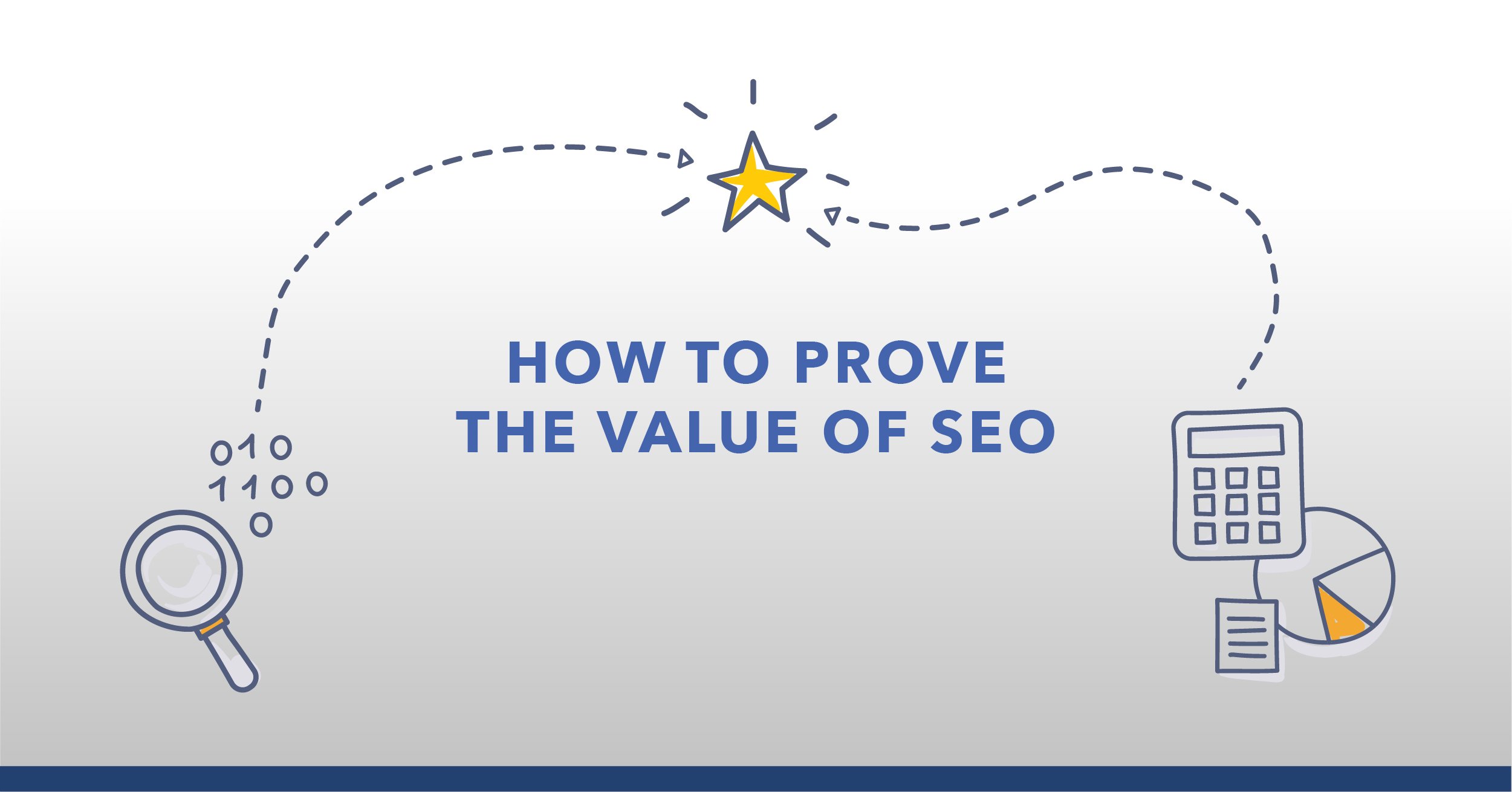Organic search is an extremely lucrative marketing channel responsible for 53 percent of trackable website traffic.
So why is it so difficult for SEOs to justify the value of search engine optimization?
Some companies feel like they have less control over SEO compared to other marketing channels like paid search. As a result, they may choose to invest in channels that they know they can control, even if they are more expensive and less profitable.
That’s why measuring and reporting on the ROI of SEO efforts is essential when it comes to making the case for investment. We’ll show you how below.
Key Takeaways
- Tie SEO ROI to measurable business outcomes to stay resilient amid Google algorithm volatility.
- Use blended models—conversion, traffic value, and savings—to quantify SEO impact when data is incomplete.
- Forecast ROI with scenario modeling to guide strategy as AI-driven search reshapes click patterns.
Prefer video? Watch this quick 5-minute run-down of the methods instead!
Table of Contents:
- What Is ROI for SEO?
- Formula for Calculating SEO ROI
- Five Methods for Measuring the ROI of SEO
- ROI for SEO: Using Conversion Data
- ROI for SEO: Using Traffic Data
- ROI for SEO: Money Saved
- ROI for SEO: Estimating Conversions
- ROI for SEO: Specific Campaigns / Projects
- Top Challenges of Calculating SEO ROI
- Forecasting ROI for SEO
What Is ROI for SEO?
ROI (Return on Investment) for SEO refers to the measurement of the amount of revenue generated from an investment in search engine optimization.
To calculate ROI for SEO, businesses need to track their organic traffic, conversion rates, revenue generated from organic search, and other key performance indicators (KPIs).
By measuring ROI for SEO, businesses can make informed decisions about their marketing budget and focus on strategies that drive ROI and provide the best long-term return on investment.
Formula For Calculating SEO ROI
ROI Formula
Value of Conversions – Investment
Investment
To calculate ROI, you need to determine the cost of your SEO campaign and its impact on your business.
Start by tracking your website’s traffic, keyword rankings, and conversion rates before and after implementing SEO.
Then, calculate the revenue generated from those conversions and subtract the cost of your SEO campaign. Divide the net profit by the cost of the campaign, and you'll have your ROI.
Here’s an example:
Value of Conversions (sales): $120,000
Investments:
- SEO team: $10,000
- Content writing: $5,000
- SEO agency cost: $2,000
- Tools / Platforms: $3,000
Total: $20,000
ROI Example
$120,000 - $20,000 = $100,000
To determine the ROI percentage to compare to other channels, divide the investment by the return you got from that investment.
$100,000 / $20,000 = 5x return
*Be sure your calculation includes the sum total SEO activity costs so ROI reflects the full investment.
Seems simple enough, right?
Not necessarily. Determining the actual value of conversions and tracking ROI for specific projects poses a unique set of challenges. If you don't have that information, there are other ways to determin a return on investment.
Five Methods for Measuring the ROI of SEO
To help you calculate the ROI of your SEO strategy, we’ve laid out a basic approach as well as other methods if you don’t have information on direct conversions and revenue from organic search.
Method 1 — ROI Based on Actual Conversions
Site Analytics in seoClarity makes it easy to determine the value of SEO efforts based on revenue (sales) or the value of a lead. Take the example below of an E-commerce site.
The “Ecommerce Value” shows the monetary value of conversions on your site. To calculate your ROI, all you need to do is determine the value of your SEO efforts.
Here’s another example for a lead generation website. Site Analytics clearly shows how many leads have been acquired. To determine the total value of conversions, assign a value for each lead and multiply it by the number of leads.
Method 2 — ROI Using Traffic Value Estimates
Need to determine the ROI of your SEO efforts but don’t have analytics?
Use ranking data based on your domain to get to the estimated traffic and traffic value based on cost per click (CPC) if you were to pay for those clicks in paid search.
seoClarity’s Research Grid is used below to demonstrate.
If you don't have access to a domain research tool, you can use seoClarity's free version. It allows you five free queries per day or 10 free if you register. You'll get the traffic value of current organic traffic for both desktop and mobile.
seoClarity's Domain Research - Research Grid
Research Grid allows you to search any domain and calculates traffic value by determining which keywords are driving traffic. Simply look at the metric “traffic value” to determine the value of the traffic the keywords are driving.
Recommended Reading: What Marketing Metrics Help You Track ROI of SEO
Method 3 — ROI from Cost Savings vs. Paid Search
If you don’t currently have any conversions, you can still determine the ROI of your SEO services.
It’s important to remember that ROI is not solely based on revenue. It is also based on how much money you save.
Determining how much money it would have cost you to get the same traffic from another source is an alternative way to determine the ROI from organic search.
For example, you may have had to spend 50 cents per click for paid search which equates to $600 for 1.2K of traffic. Cost savings from unpaid clicks strengthen your overall ROI.
Method 4 — ROI by Estimating Conversions
Another approach to gauge the potential return on investment from your SEO efforts in the absence of current conversions is to estimate conversions.
To do this, consider the conversion rate from paid search. Let's say it's 10 percent. Next, determine the value of conversions from paid search, for instance, $2,000 per conversion.
Then, apply these figures to estimate conversions for your organic search efforts.
For example, if you received 1,000 organic search visits, you can estimate that approximately 10 percent of those visits would have resulted in conversions based on the paid search conversion rate. Therefore, you can estimate around 100 conversions.
To calculate the potential ROI, multiply the estimated number of conversions (100) by the value of conversions ($2,000). In this example, the estimated value of conversions from organic search would be $200,000.
Here’s an example from our platform:
It's important to note that these estimates may not be as accurate as real conversion data, but they can still offer insights into the potential value generated by your organic search efforts. As your SEO strategy progresses and actual conversion data becomes available, you can refine your ROI calculations for a more accurate assessment.
Check out our list of the most effective 2024 SEO strategies specifically for enterprise companies.
How to Track ROI for Specific SEO Projects
But how do you easily track ROI for specific projects and campaigns such as updating page titles, adding new pages, building new pages, or removing content? The solution is simple. Tags!
For each project or campaign, create tags in the seoClarity platform to track the performance of the affected pages. Then, in Site Analytics, filter by tag for all of the new pages that have been optimized or deployed.
Using the power of ChatGPT in the platform, you can even deploy keyword and page tags in bulk to easily track and report on the performance of thousands of pages.
Top Challenges of Calculating SEO ROI
Measuring the return on investment for SEO isn't always straightforward and can pose some real challenges.
Here are a few of the key obstacles that SEOs often face when trying to figure out the ROI of their efforts:
- Isolating the Impact of SEO: The online marketing world is pretty intertwined, so it can be tricky to pin down exactly how much impact your SEO work is having when other channels are in play. Additionally, it’s important to adjust for branded vs. non-branded traffic so you’re measuring true organic demand rather than brand-driven lifts.
- Longer Timeframes: SEO campaigns are a long-term marketing strategy, and results don't happen overnight. Sometimes, it's tough to connect the dots between your actions and the outcomes you're seeing.
- Constant Algorithm Changes: Search engine algorithms are constantly changing, which can lead to fluctuations in your rankings and traffic. That makes it a bit of a puzzle to measure how your SEO is really performing.
- Measuring Offline Conversions: If your SEO efforts are also driving sales or actions in the physical world, like in-store purchases, tracking ROI becomes more complex.
- Quantifying Non-Monetary Benefits: Sometimes, the value of SEO goes beyond dollars and cents, like better brand visibility and customer engagement. It can be a challenge to put a number on these benefits.
To conquer these challenges, it's all about keeping a close eye on your SEO performance, creating thorough reports, and always having a clear understanding of your company's main goals.
To simplify the process of forecasting SEO ROI, we have a helpful capability you might be interested in...
Forecasting ROI for SEO
Traffic Potential in seoClarity allows you to forecast the ROI from SEO based on any number of defined scenarios.
It provides a variety of “what if” parameters that you can specify and allows you to enter conversion estimates.
If you’re looking for a benchmark to gauge keyword ranking changes, we suggest using 10 percent as a safe place to start.
For keywords in position 60 or 70, 10 percent represents a 6- or 7-place jump higher which is fairly reasonable. And for positions 7, 8, 9, and 10, it represents a 0.7 to 1 position increase.
This reflects the reality that it is easier to jump higher in ranking when you are ranking low, but gets progressively more difficult to improve rankings when you are already in the top 10 positions.
Conclusion
As previously stated, SEO is one of, if not the most, lucrative and impactful digital marketing channels. Unfortunately, it is also often one of the most underfunded.
To make the case for investment, it’s extremely important to measure and report on ROI. We hope the methods and solutions listed above help you accomplish this task.







Comments
Currently, there are no comments. Be the first to post one!